The first time that I sailed across the Atlantic, the only electronics onboard were a depth sounder, which ran off an internal large nine-volt battery, and a huge CRT radar, which took ages to warm up from the cold and used prodigious amounts of 12-volt battery power. These days even the smallest of boats has some sort of electronics onboard, but making a choice in the fast-paced world of marine electronics can be tough. There is no “one size fits all” when it comes to outfitting your boat with electronics. Various factors come into play: where and what kind of boating you do, what size boat you have, and your budget.
Here is a round up of products that that can make your time on the water safer and more enjoyable. The prices shown are manufacturers’ suggested retail prices or where these are not published, from online retailers.
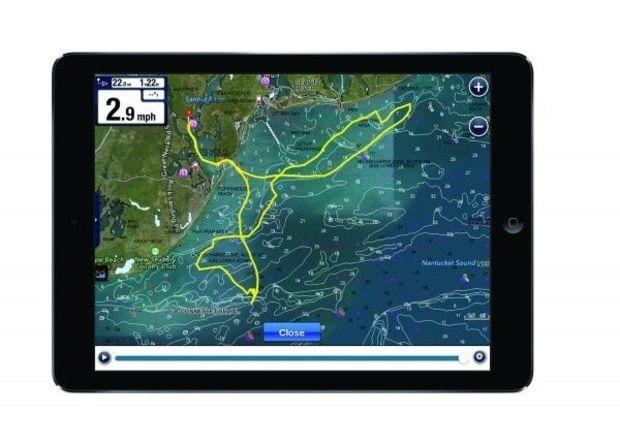 Navionics app
Navionics app
It seems that just about everybody has a smart phone or tablet these days, and the Navionics boating app brings touch-screen navigation to your favorite device. Available as a download for Apple, Android, and Windows devices, the app is free, but for the full experience you really need to buy the fully detailed charts for an extra charge, which varies depending on the device. A drag and drop menu means that you only need to download the charts for your cruising area, but should you expand your horizons, extra charts can be downloaded for no extra charge. Other features include weather and tidal information in addition to marina and boatyard facts and figures. $54.99 for detailed iPad charts.
navionics.com
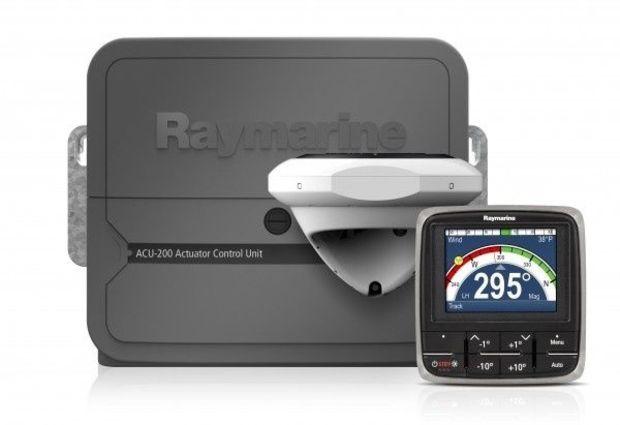 Evolution Auto Pilot
Evolution Auto Pilot
If you spend a lot of time cruising, you know what a godsend a good autopilot can be. The Evolution autopilot from Raymarine has some smarts when it comes to automatically steering your boat. At its heart is what Raymarine calls the ‘sensor core,’ which has a nine axis transducer constantly monitoring such things as pitch and yaw, heading, and magnetic deviation. It self-calibrates for precise navigation. Various drive options are available to suit both inboard- and outboard-powered vessels with either mechanical or hydraulic steering systems. With NMEA 2000 integration, full control and integration is possible from a compatible chart plotter or MFD. $1300 approximately, depending on configuration.
raymarine.com
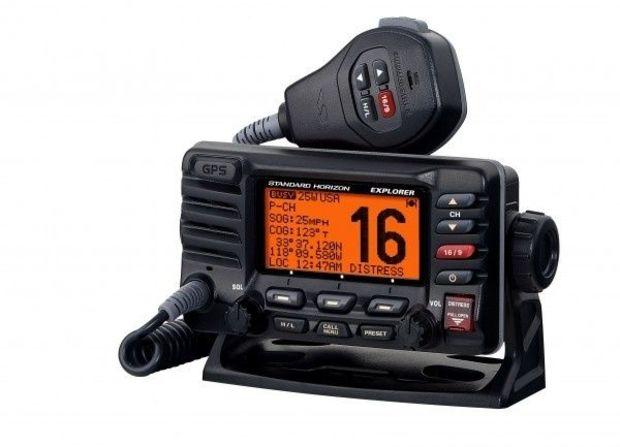 Standard Horizon Explorer
GX1700 VHF
Standard Horizon Explorer
GX1700 VHF
Having a VHF radio onboard is almost essential, but Standard Horizon has taken that one stage further by including not only a separate GPS but also an AIS receiver. The radio is currently available at online retailers for about $250, a very good value considering its capability. In addition to a fully featured VHF radio, the inclusion of the built-in GPS antenna means that the GX1700 does not require connecting to a separate chart plotter or other GPS receiver for the DSC to operate. The owner simply has to enter an MMSI number, which can be acquired for free, and the set is ready to send emergency calls. The set also has an AIS receiver built in making identification and communicating with ships close-by a cinch. $250.
standardhorizon.com
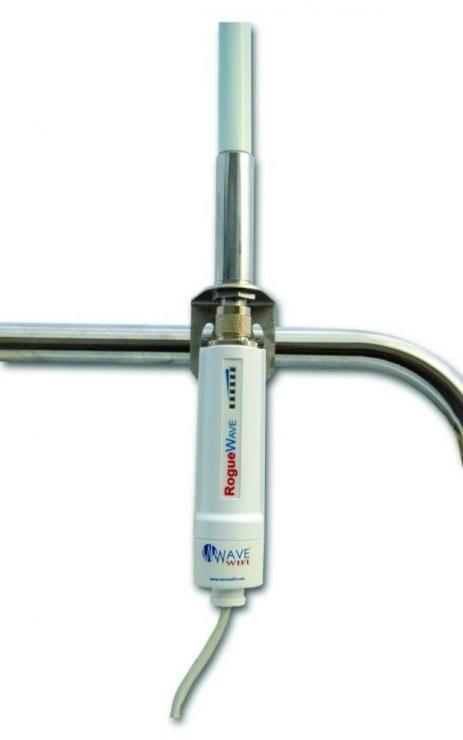 Rogue Wave WiFi
Rogue Wave WiFi
It seems that having access to the internet is almost essential for many cruisers these days; but WiFi hot spots in marinas often have limited range, and connecting to the internet via the cell networks can be frustrating, slow, and expensive. Rogue Wave is a bridge between WiFi ashore and devices on your boat. Having installed one of these on my own boat, I can attest to their function and usefulness, as I am often able to connect to free WiFi connections several miles away.
Set up is easy and straightforward, but for best results the antenna must be mounted on a handrail with a clear unobstructed view (a mounting bracket is included). Connections can be made directly from the antenna, but add a wireless router and everyone aboard can surf the internet. $350.
wavewifi.com
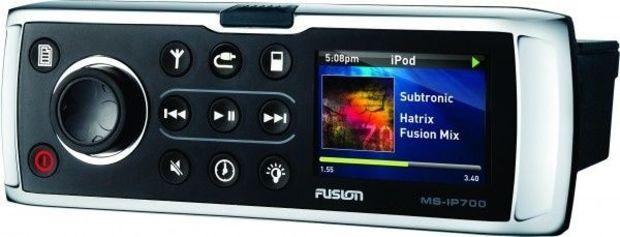 Fusion MS-IP700i
Fusion MS-IP700i
Sometimes the sound of the sea swooshing by the bow is all the music you need, but at other times, it can be nice to have music aboard. New Zealand-based Fusion has only been manufacturing marine stereo systems for a little over a decade but it has quickly gained a reputation for reliability, performance, and innovation. The MS-IP700i is just one of the products and is truly a stereo system designed for life afloat. Water resistant to Ipx5, the stereo can safely be mounted in the cockpit or on the fly bridge without ill effects.
It’s stylish, with easy-to-read controls even in low light. What sets the Fusion apart is the flip-down front that opens to reveal a dock for an iPod or iPhone. With the front latch closed, the iPod is perfectly protected from the elements while being charged and maintaining full functionality from the controls on the front of the Fusion unit. Up to four separate audio zones can be configured. Add-ons such as subwoofer units, remote controls, and connectivity to an onboard NMEA network are also available options. $430 not including speakers.
fusionentertainment.com
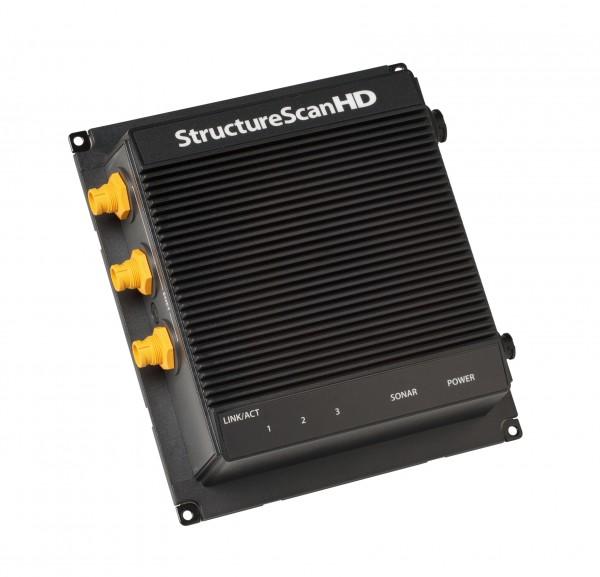 Simrad Structure Scan
Simrad Structure Scan
Knowing what’s under your boat is important, especially in skinny waters such as the Chesapeake; but just knowing how deep the water is may not be enough sometimes. You need to know if there are hidden obstructions that can snag a rudder or propeller. The Simrad StructureScan can display underwater details in outstanding clarity and give the boater a far better idea of the ideal place to drop the hook. I’ve been on boats with this equipment fitted, and it’s a game changer. You can actually see individual fish, weeds, and rocks, not just immediately below the boat but out to left and right. Like so many pieces of modern equipment, the StructureScan is a black box which interfaces into a boat’s network with the image displaying on the vessels MFD. $499.95.
simrad-yachting.com
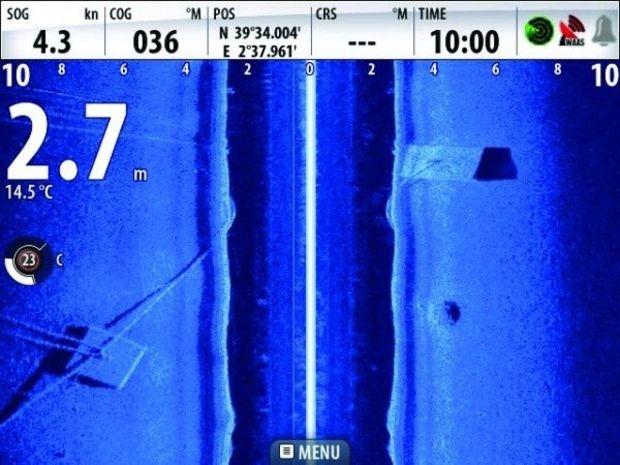
by Mark Corke
 Navionics app
It seems that just about everybody has a smart phone or tablet these days, and the Navionics boating app brings touch-screen navigation to your favorite device. Available as a download for Apple, Android, and Windows devices, the app is free, but for the full experience you really need to buy the fully detailed charts for an extra charge, which varies depending on the device. A drag and drop menu means that you only need to download the charts for your cruising area, but should you expand your horizons, extra charts can be downloaded for no extra charge. Other features include weather and tidal information in addition to marina and boatyard facts and figures. $54.99 for detailed iPad charts. navionics.com
Navionics app
It seems that just about everybody has a smart phone or tablet these days, and the Navionics boating app brings touch-screen navigation to your favorite device. Available as a download for Apple, Android, and Windows devices, the app is free, but for the full experience you really need to buy the fully detailed charts for an extra charge, which varies depending on the device. A drag and drop menu means that you only need to download the charts for your cruising area, but should you expand your horizons, extra charts can be downloaded for no extra charge. Other features include weather and tidal information in addition to marina and boatyard facts and figures. $54.99 for detailed iPad charts. navionics.com
 Evolution Auto Pilot
If you spend a lot of time cruising, you know what a godsend a good autopilot can be. The Evolution autopilot from Raymarine has some smarts when it comes to automatically steering your boat. At its heart is what Raymarine calls the ‘sensor core,’ which has a nine axis transducer constantly monitoring such things as pitch and yaw, heading, and magnetic deviation. It self-calibrates for precise navigation. Various drive options are available to suit both inboard- and outboard-powered vessels with either mechanical or hydraulic steering systems. With NMEA 2000 integration, full control and integration is possible from a compatible chart plotter or MFD. $1300 approximately, depending on configuration. raymarine.com
Evolution Auto Pilot
If you spend a lot of time cruising, you know what a godsend a good autopilot can be. The Evolution autopilot from Raymarine has some smarts when it comes to automatically steering your boat. At its heart is what Raymarine calls the ‘sensor core,’ which has a nine axis transducer constantly monitoring such things as pitch and yaw, heading, and magnetic deviation. It self-calibrates for precise navigation. Various drive options are available to suit both inboard- and outboard-powered vessels with either mechanical or hydraulic steering systems. With NMEA 2000 integration, full control and integration is possible from a compatible chart plotter or MFD. $1300 approximately, depending on configuration. raymarine.com
 Standard Horizon Explorer
GX1700 VHF
Having a VHF radio onboard is almost essential, but Standard Horizon has taken that one stage further by including not only a separate GPS but also an AIS receiver. The radio is currently available at online retailers for about $250, a very good value considering its capability. In addition to a fully featured VHF radio, the inclusion of the built-in GPS antenna means that the GX1700 does not require connecting to a separate chart plotter or other GPS receiver for the DSC to operate. The owner simply has to enter an MMSI number, which can be acquired for free, and the set is ready to send emergency calls. The set also has an AIS receiver built in making identification and communicating with ships close-by a cinch. $250. standardhorizon.com
Standard Horizon Explorer
GX1700 VHF
Having a VHF radio onboard is almost essential, but Standard Horizon has taken that one stage further by including not only a separate GPS but also an AIS receiver. The radio is currently available at online retailers for about $250, a very good value considering its capability. In addition to a fully featured VHF radio, the inclusion of the built-in GPS antenna means that the GX1700 does not require connecting to a separate chart plotter or other GPS receiver for the DSC to operate. The owner simply has to enter an MMSI number, which can be acquired for free, and the set is ready to send emergency calls. The set also has an AIS receiver built in making identification and communicating with ships close-by a cinch. $250. standardhorizon.com
 Rogue Wave WiFi
It seems that having access to the internet is almost essential for many cruisers these days; but WiFi hot spots in marinas often have limited range, and connecting to the internet via the cell networks can be frustrating, slow, and expensive. Rogue Wave is a bridge between WiFi ashore and devices on your boat. Having installed one of these on my own boat, I can attest to their function and usefulness, as I am often able to connect to free WiFi connections several miles away.
Set up is easy and straightforward, but for best results the antenna must be mounted on a handrail with a clear unobstructed view (a mounting bracket is included). Connections can be made directly from the antenna, but add a wireless router and everyone aboard can surf the internet. $350. wavewifi.com
Rogue Wave WiFi
It seems that having access to the internet is almost essential for many cruisers these days; but WiFi hot spots in marinas often have limited range, and connecting to the internet via the cell networks can be frustrating, slow, and expensive. Rogue Wave is a bridge between WiFi ashore and devices on your boat. Having installed one of these on my own boat, I can attest to their function and usefulness, as I am often able to connect to free WiFi connections several miles away.
Set up is easy and straightforward, but for best results the antenna must be mounted on a handrail with a clear unobstructed view (a mounting bracket is included). Connections can be made directly from the antenna, but add a wireless router and everyone aboard can surf the internet. $350. wavewifi.com
 Fusion MS-IP700i
Sometimes the sound of the sea swooshing by the bow is all the music you need, but at other times, it can be nice to have music aboard. New Zealand-based Fusion has only been manufacturing marine stereo systems for a little over a decade but it has quickly gained a reputation for reliability, performance, and innovation. The MS-IP700i is just one of the products and is truly a stereo system designed for life afloat. Water resistant to Ipx5, the stereo can safely be mounted in the cockpit or on the fly bridge without ill effects.
It’s stylish, with easy-to-read controls even in low light. What sets the Fusion apart is the flip-down front that opens to reveal a dock for an iPod or iPhone. With the front latch closed, the iPod is perfectly protected from the elements while being charged and maintaining full functionality from the controls on the front of the Fusion unit. Up to four separate audio zones can be configured. Add-ons such as subwoofer units, remote controls, and connectivity to an onboard NMEA network are also available options. $430 not including speakers. fusionentertainment.com
Fusion MS-IP700i
Sometimes the sound of the sea swooshing by the bow is all the music you need, but at other times, it can be nice to have music aboard. New Zealand-based Fusion has only been manufacturing marine stereo systems for a little over a decade but it has quickly gained a reputation for reliability, performance, and innovation. The MS-IP700i is just one of the products and is truly a stereo system designed for life afloat. Water resistant to Ipx5, the stereo can safely be mounted in the cockpit or on the fly bridge without ill effects.
It’s stylish, with easy-to-read controls even in low light. What sets the Fusion apart is the flip-down front that opens to reveal a dock for an iPod or iPhone. With the front latch closed, the iPod is perfectly protected from the elements while being charged and maintaining full functionality from the controls on the front of the Fusion unit. Up to four separate audio zones can be configured. Add-ons such as subwoofer units, remote controls, and connectivity to an onboard NMEA network are also available options. $430 not including speakers. fusionentertainment.com
 Simrad Structure Scan
Knowing what’s under your boat is important, especially in skinny waters such as the Chesapeake; but just knowing how deep the water is may not be enough sometimes. You need to know if there are hidden obstructions that can snag a rudder or propeller. The Simrad StructureScan can display underwater details in outstanding clarity and give the boater a far better idea of the ideal place to drop the hook. I’ve been on boats with this equipment fitted, and it’s a game changer. You can actually see individual fish, weeds, and rocks, not just immediately below the boat but out to left and right. Like so many pieces of modern equipment, the StructureScan is a black box which interfaces into a boat’s network with the image displaying on the vessels MFD. $499.95. simrad-yachting.com
Simrad Structure Scan
Knowing what’s under your boat is important, especially in skinny waters such as the Chesapeake; but just knowing how deep the water is may not be enough sometimes. You need to know if there are hidden obstructions that can snag a rudder or propeller. The Simrad StructureScan can display underwater details in outstanding clarity and give the boater a far better idea of the ideal place to drop the hook. I’ve been on boats with this equipment fitted, and it’s a game changer. You can actually see individual fish, weeds, and rocks, not just immediately below the boat but out to left and right. Like so many pieces of modern equipment, the StructureScan is a black box which interfaces into a boat’s network with the image displaying on the vessels MFD. $499.95. simrad-yachting.com
 by Mark Corke
by Mark Corke